Ambera Wellmann Clay Pidgeon

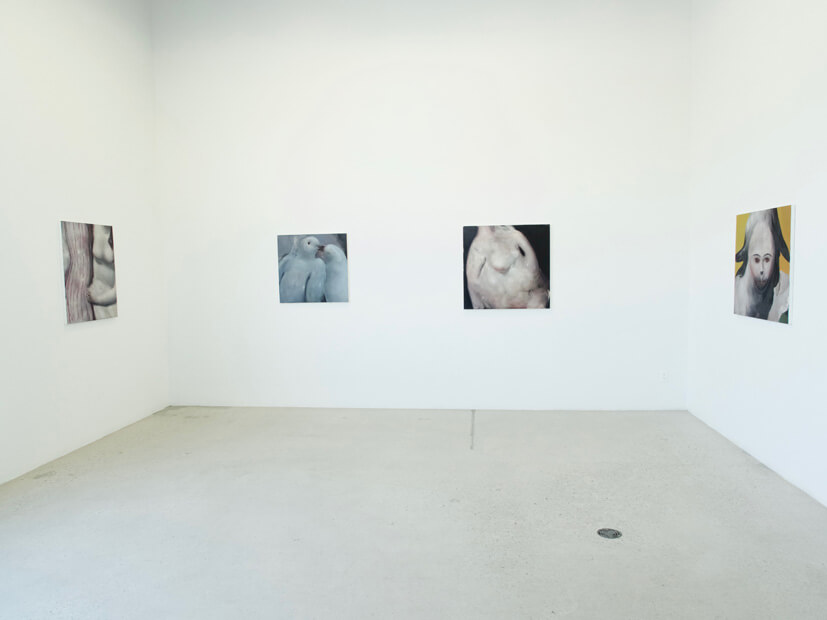
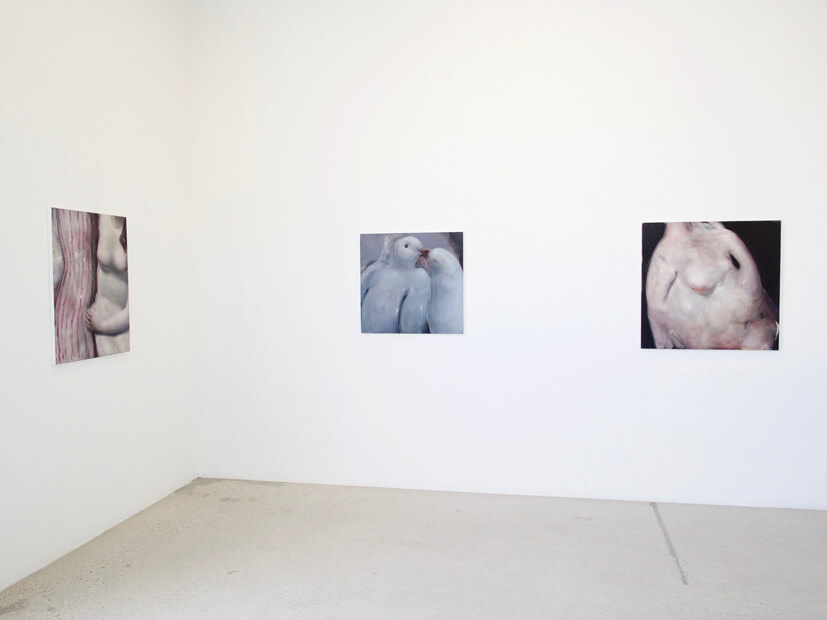

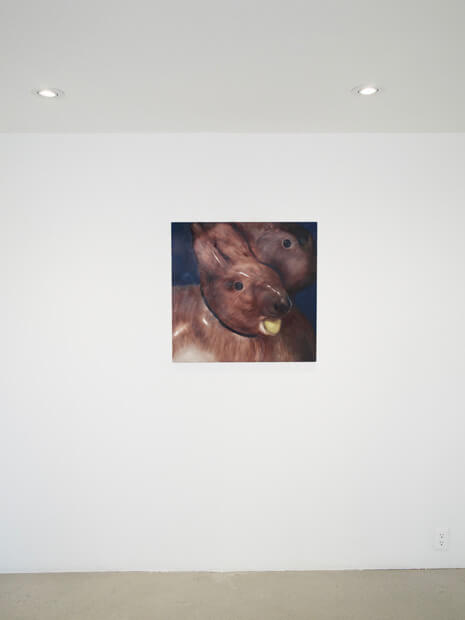
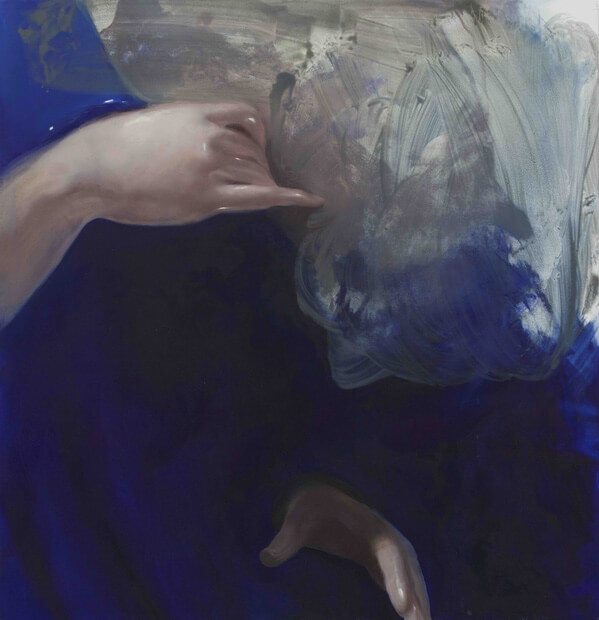
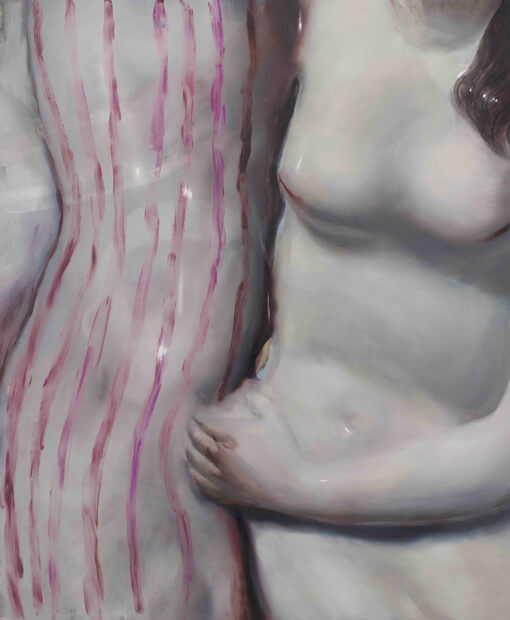
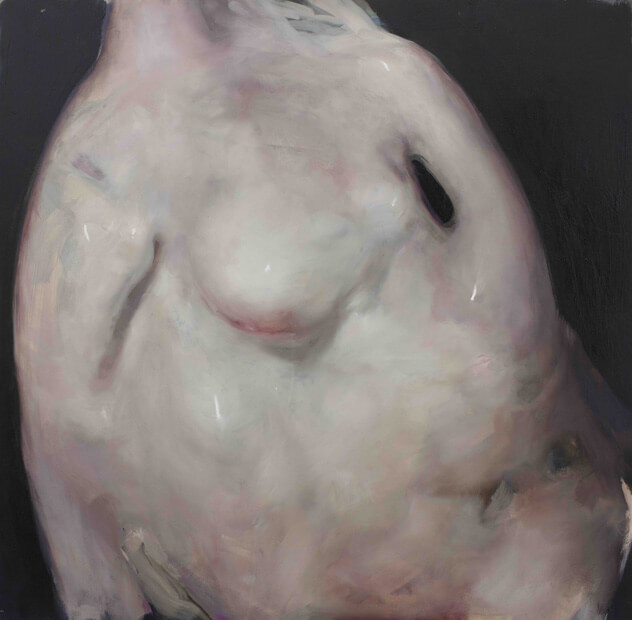

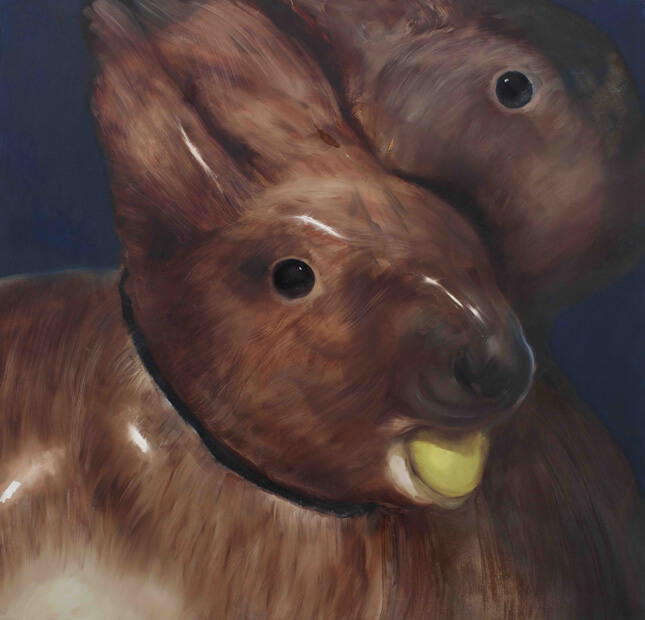
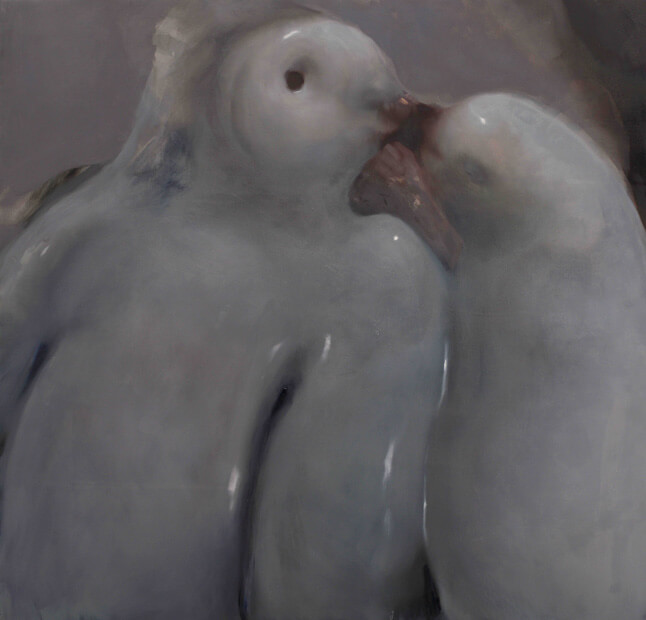
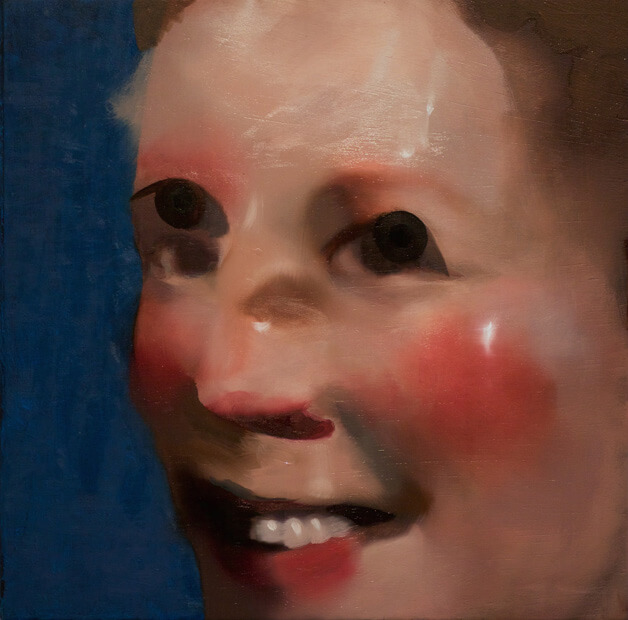
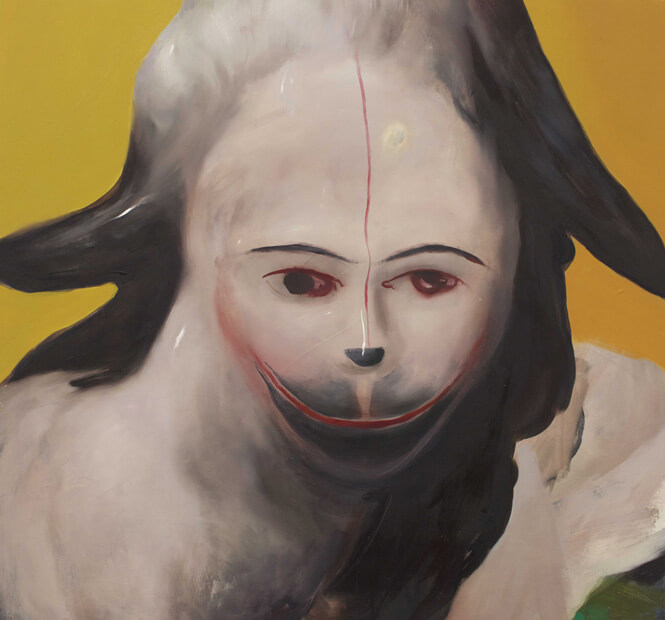
The Pleasures of Density
Ambera Wellmann's oil paintings are not big. Most measure less than 30 inches; the largest no more than 33 inches tall. Yet within these modest dimensions Wellmann brings together colour, gesture, texture and image to deliver concatenations of visual incident and layered art history that refocus the potentials of contemporary figurative painting.
The density of the work creates a perceptual pause that enhances the isolation of the pictures. The welter of marks and purposed decisions that make up each work take the viewer inside sophisticated image constructions where fluidities of identity and recognition resound within relatively small parameters. The unfathomable flesh form of her painting "Judith" for instance, challenges us to come to terms with what we see. It is a painting on a domestic scale but it shows us something that lies between a monstrous palpitating life form and a glazed ceramic model. Painting thrives on such indeterminacy. To see Wellmann telescope it with a compressed, fragmentary view onto the subject yet at the same time open the potentials of resolution so that the abject manages to ride side by side with the heroic is to feel engaged with painting that has serious ambitions to speak to human experience one picture at a time.
This is the case even when that human experience comes in the guise of the animals that recently have been subjects of her work. The animals mirror us by presenting a tacit innocence that we must engage. The gleam that cuts across the doubled subject of "Hare Hare" is a viscous gleam that puts us eye-to-eye with a pair of furred rabbits that might also be uncannily animated Easter ornaments. Everything is doubled or shadowed in the painting. The brushstrokes, the composition and form building and the fur textures carry our eyes across the surface of the picture and elide with the watchfulness of the rabbits. The play from surface to subject is like a meta-summary of painting's ever-elusive representational world and in this instance, while we look, their vulnerability becomes our responsibility
In "Wunde", which translates as "wound" from the German, another rabbit stands in alert silhouette. Fatty white areas of paint define nose, shoulder and arms. They bring a glistening wetness into the foreground of the painting that plays against the unreadable darkness of the background. The painting has a tonal authority worthy of Titian portraits (or Bacon's reprises of Titian) and that long curve of tradition plays into our regard for a rabbit. It does not seem a comic or childish figure despite its storybook roots. On the contrary, its startled attentiveness signals a general wariness that is underscored by the painted underlife of the figure where earlier vestiges of paintings appear. They register as signs of a scarred and flayed prehistory or, worse, an impending future that explains the wary verticality of the figure as it stands to watch while we stand to look.
Wellmann's paintings operate on doubled or trebled matrixes that mange to entwine what we see with how it is made. The overlays of image and paint turn each painting into a process that delivers a subject, then a resonating meaning and emotion. "Held" honours this ongoing condition of making. It shows us two hands, the lower one lost in shadow. They bear the same tension as the other subjects in her paintings. Their representational life is caught between convincing muscular torsion and the artifice of soft and rounded glazing. The top hand, the foreground hand, gathers the edges of a brilliant blue background. The curled fingers play it like an instrument. This invisible harp abruptly gives way to explosive gestures traced on a scumbled ground of paint. They are fingers finding the source of the picture, the beginnings that become an image. On other words, they play a song of paint. In Wellmann's hands, this is a song that gets ever richer.
Artist Statement
“Everywhere and always, when human beings either cannot or dare not take their anger out on the thing that has caused it, they unconsciously search for substitutes, and more often than not they find them.”
― Rene Girard, The One by Whom Scandal Comes
My endeavour to express the uncanny quality of certain historical figure paintings without relying on their resemblance has led to a series of substitutions, moving away from the body to come closer to it. Porcelain is comprised of a myriad of substances, most commonly kaolin clay or the stone petunse, but it is sometimes made from ash and pulverized bone. In its raw state it is referred to as ‘a body.’ Once fired and vitrified by the kiln’s heat its body resembles the luminous surface of a cowrie shell, or porcella, which in Italian translates as young sow. This etymological connection stems from the visual similarity between the opening of a cowrie shell and the exposed genitalia of a female swine. Porcelain’s body is feminized; artist and author Edmund De Waal observes “The story of its travels, of its trade, is one of desire. There are very few materials in the world that embody such a strong transformational pull from earth to something that is so light, translucent, so fine that it rings as clear as a bell. It is alchemy.”
Like porcelain’s feminized body, a painted nude is a non-living material substituted for a living thing to take on the semblance of life; it pretends to be something it is not, it is transformational, it is alchemy. I substitute porcelain for the female body to catechize figuration as an instance of the uncanny, and to explore the sexualization of both. This series emerges from an investigation of the neoclassical paintings of Jean August Dominique Ingres, whose lifelike nudes threaten a tension between the second and third dimension, like porcelain sculptures in low relief. My work appropriates the visual motifs of Ingres’ paintings in order to redirect a critique toward the uncanny, erotic and violent characteristics that constitute neoclassical representations of women.
Porcelain operates as both a subject and a substrate for a response. The topical marks and gestures of my work aim to disrupt figure-ground hierarchies in order to instigate a critical reflection of the painting’s mimetic surface as a body in and of itself. In my depictions of porcelain, the candour of its white exterior is often bruised or blemished, or made impure, reanimated through an underlying violence. Stains seep through from beneath. Sometimes its cool translucency disguises a warm interior, or betrays the latent silhouette of a buried head or an outstretched limb that is covered, but not entirely concealed, by the painting’s surface.
Porcelain is an allegory for figuration, embodying the lingering uncanny affect of historical forms of representation. It gestates a confrontation between antiquity and contemporaneity, and hosts their compelling convergence in the field of figuration. Rigid and fragile, the depiction of porcelain alludes to the paradoxical persistence and vulnerability of figuration, and the peculiar way in which something seemingly hollow continues to engender pathos.
Ambera Wellmann was born in Lunenburg, Nova Scotia and attended the Nova Scotia College of Art and Design University, where she graduated in 2011 with a focus on painting, drawing and printmaking. She is a recipient of several creation grants from the province of Nova Scotia, a Social Sciences and Humanities Research Creation Grant from the Government of Canada, and most recently, is the 2016 recipient of the Joseph Plaskett Award. Wellmann is currently an MFA candidate of the University of Guelph, Ontario and expects to graduate in the summer of 2016. She is a finalist in the 2016 RBC Canadian Painting Competition.
About Richard Rhodes Dupont Projects
Launched in 2016 as part of the new Dupont St. gallery scene in Toronto, Richard Rhodes Dupont Projects was devoted to an exhibition program of contemporary Canadian art. Founding editor of C Magazine and editor of Canadian Art from 1996 through 2015, Richard Rhodes brought his expertise to exhibitions by emerging and established artists from across Canada. His informed critical eye launched and nurtured numerous careers in the Canadian art world over the past three decades. A photo diary of his continuing interests and work can be seen on Instagram at @c4rhodes. The gallery website will continue to be viewable at: www.dupontprojects.com.
